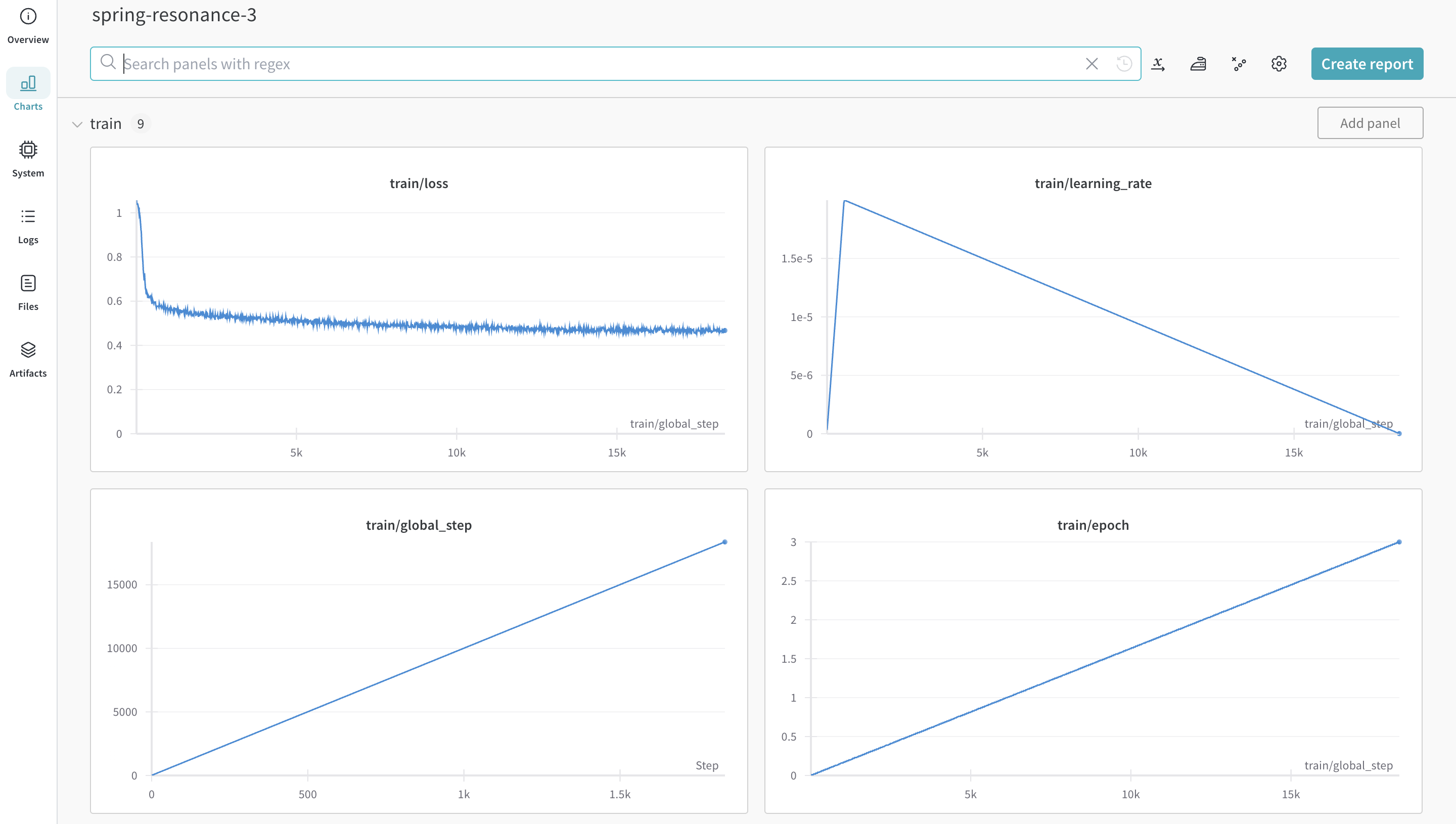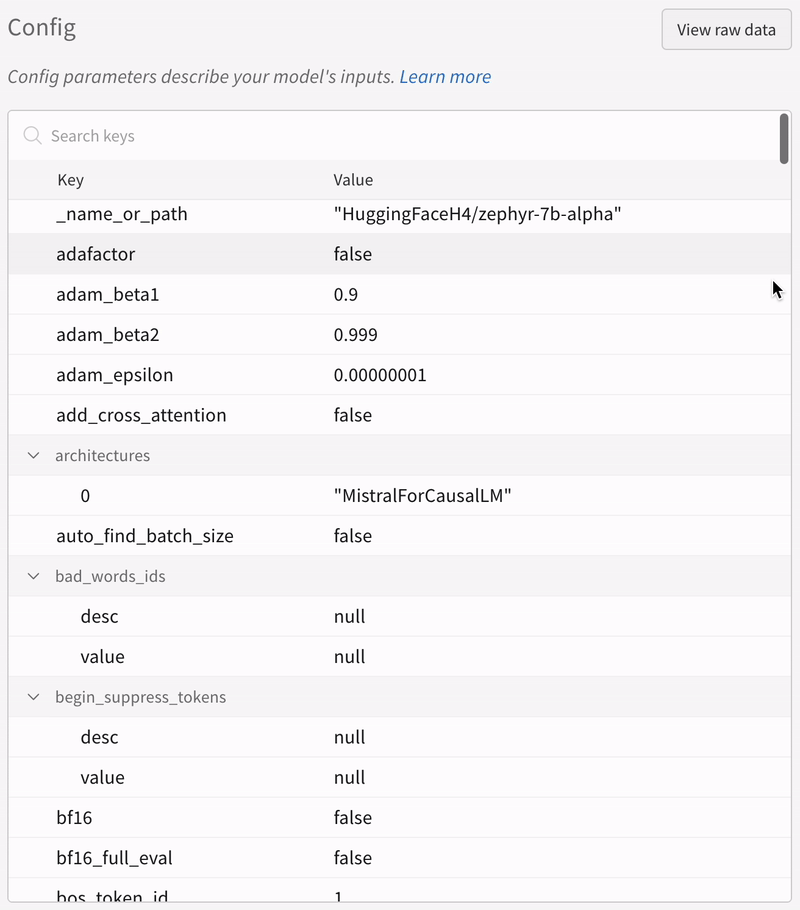Hugging Face Autotrain
🤗 AutoTrain is a no-code tool for training state-of-the-art models for Natural Language Processing (NLP) tasks, for Computer Vision (CV) tasks, and for Speech tasks and even for Tabular tasks.
Weights & Biases is directly integrated into 🤗 AutoTrain, providing experiment tracking and config management. It's as easy as using a single parameter in the CLI command for your experiments!
 |
|---|
| An example of how the metrics of your experiment are logged. |
Getting Started
First, we need to install autotrain-advanced and wandb.
- Command Line
- Notebook
pip install --upgrade autotrain-advanced wandb
!pip install --upgrade autotrain-advanced wandb
Getting Started: Fine-tuning an LLM
To demonstrate these changes we will fine-tune an LLM on a math dataset and try achieving SoTA result in pass@1 on the GSM8k Benchmarks.
Preparing the Dataset
🤗 AutoTrain expects your CSV custom dataset in a certain format to work properly. Your training file must contain a "text" column on which the training will be done. For best results, the "text" column should have data in the ### Human: Question?### Assistant: Answer. format. A great example for the kind of dataset AutoTrain Advanced expects would be timdettmers/openassistant-guanaco. However, if you observe the MetaMathQA dataset, there are 3 columns - "query", "response" and "type". We will preprocess this dataset by removing the "type" column and combining the content of the "query" and "response" columns under one "text" column with the ### Human: Query?### Assistant: Response. format. The resulting dataset is rishiraj/guanaco-style-metamath and it will be used for training.
Training using Autotrain Advanced
We can start training using the Autotrain Advanced CLI. To leverage the logging functionality, we simply use the --log argument. Specifying --log wandb will seamlessly log your results to a W&B run.
- Command Line
- Notebook
autotrain llm \
--train \
--model HuggingFaceH4/zephyr-7b-alpha \
--project-name zephyr-math \
--log wandb \
--data-path data/ \
--text-column text \
--lr 2e-5 \
--batch-size 4 \
--epochs 3 \
--block-size 1024 \
--warmup-ratio 0.03 \
--lora-r 16 \
--lora-alpha 32 \
--lora-dropout 0.05 \
--weight-decay 0.0 \
--gradient-accumulation 4 \
--logging_steps 10 \
--fp16 \
--use-peft \
--use-int4 \
--merge-adapter \
--push-to-hub \
--token <huggingface-token> \
--repo-id <huggingface-repository-address>
# Set hyperparameters
learning_rate = 2e-5
num_epochs = 3
batch_size = 4
block_size = 1024
trainer = "sft"
warmup_ratio = 0.03
weight_decay = 0.
gradient_accumulation = 4
lora_r = 16
lora_alpha = 32
lora_dropout = 0.05
logging_steps = 10
# Run training
!autotrain llm \
--train \
--model "HuggingFaceH4/zephyr-7b-alpha" \
--project-name "zephyr-math" \
--log "wandb" \
--data-path data/ \
--text-column text \
--lr str(learning_rate) \
--batch-size str(batch_size) \
--epochs str(num_epochs) \
--block-size str(block_size) \
--warmup-ratio str(warmup_ratio) \
--lora-r str(lora_r) \
--lora-alpha str(lora_alpha) \
--lora-dropout str(lora_dropout) \
--weight-decay str(weight_decay) \
--gradient-accumulation str(gradient_accumulation) \
--logging-steps str(logging_steps) \
--fp16 \
--use-peft \
--use-int4 \
--merge-adapter \
--push-to-hub \
--token str(hf_token) \
--repo-id "rishiraj/zephyr-math"
 |
|---|
| An example of how all the configs of your experiment are saved. |